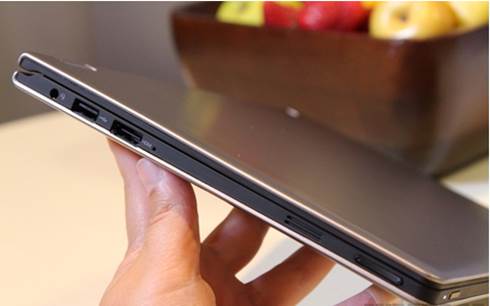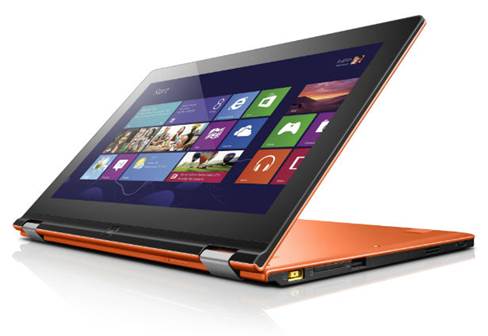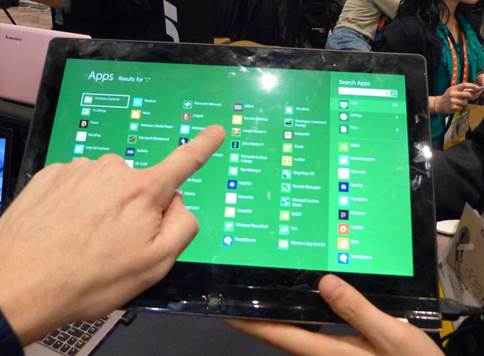With the Yoga, Lenovo proves that
sometimes, making a bold design choice can pay off.
Chinese PC powerhouse Lenovo’s Yoga is not
your usual ultrabook. It bends and flips backwards, folding back on itself in
order to be used as a tablet. Interesting you might say, but what is the
practical value? For us, it was in getting rid of the ungainly keyboard while
watching movies or surfing, since you can flip the Yoga into its Tent or Stand
mode to have the screen close by. Furthermore - having the reassurance that
your keyboard is there in case you need to fire off an email or two, counts for
a lot.

With
the Yoga, Lenovo proves that sometimes, making a bold design choice can pay
off.
As a notebook…
As a straight forward ultrabook, the Yoga
is very efficient, since it comes with a third-gen Core i5 processor, 4GB RAM
and a 128GB solid state drive. The i5 in our opinion offers the best value for
money and in the Yoga’s case, performance could not be questioned. For some,
the 128GB SSD might create hassles since it is partitioned with only 60GB
useable space available (a new patch allows for a bit more space). Included are
two USB 3.0 ports, an SD card slot, full HDMI, but unfortunately no LAN port
nor VGA is on offer. Like many of its ultrabook kin, there’s also no DVD drive.

Included
are two USB 3.0 ports, an SD card slot, full HDMI, but unfortunately no LAN
port nor VGA is on offer
But as a tablet?
With the 13.3” (1600 x 900) IPS touchscreen
folded back onto the device, the Yoga turns into a rather big tablet. Seeing
that it weighs 1.54kg, with a thickness of 16.9mm, it’s not exactly the neither
thinnest nor most lightweight tablet around. But, here’s the kick: it runs the
full version of Windows 8, and not the RT version, so all your Windows
compatible software should work on it. One thing that does bother us, is the
fact that in tablet mode, the keyboard under the screen is exposed. While the
keys are locked, the long term effect of keys being pushed while on a table or
lap is of concern. Nonetheless, the keyboard is excellent, providing a
comfortable typing experience, even though a few of the keys are undersized.

With
the 13.3” (1600 x 900) IPS touchscreen folded back onto the device, the Yoga
turns into a rather big tablet
To the point
What Lenovo got right with the Yoga is that
it’s first and foremost a decent ultrabook, performing as well as, if not
better than, other units on the market. The added benefit of all its different
stand positions, eventually culminating in a tablet, is more than a simple
gimmick; it came in useful on a number of occasions.

According
to ABC, Lenovo is making two versions of the Yoga: one with an ARM NVIDIA Tegra
processor, and one with that uses the more powerful line of Intel processors.
|
Specifications
§ Price: $1,499
§ Operating system: Windows 8 Pro 64
§ Memory: 4Gb, 8GB DDR3
§ Graphics: Intel@ HD Graphics 4000
(integrated)
§ Dimensions: 333.4 x 224.8 x 16.9mm
§ Camera: 1.0MP 720p HD integrated
webcam
§ Weight: 1.54kg
§ Connectivity: Bluetooth 4.0
§ Battery life: 8 hours
|